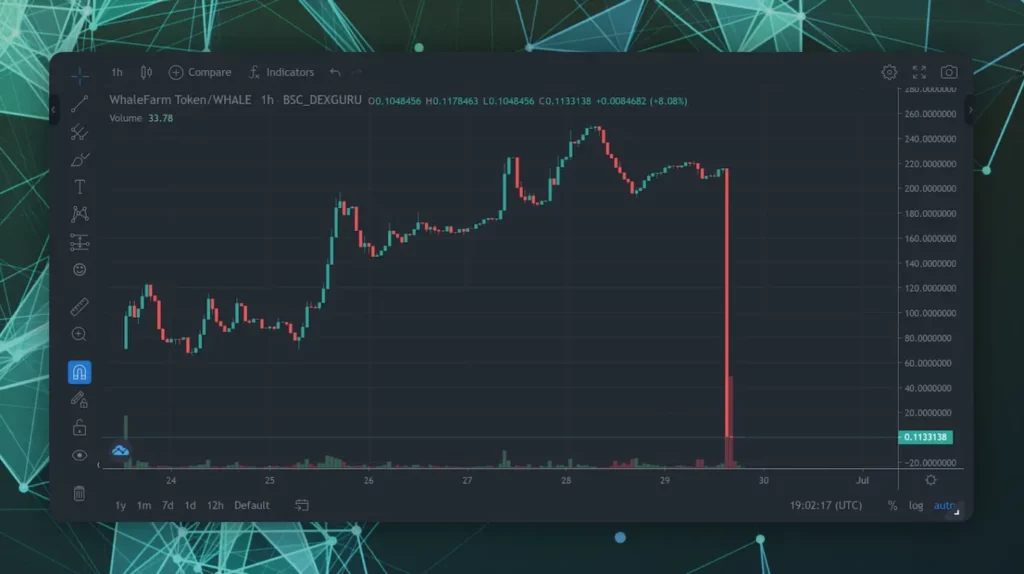An exit scam refers to a fraudulent scheme in which the operators of a business, typically an online platform, deceive their users or customers and disappear with their funds.
A famous crypto-ponzi exit scam was bitconnect:
Índice
Introduction
In the context of cryptocurrencies and online marketplaces, an exit scam occurs when a project, exchange, or platform that had been operating seemingly legitimately suddenly shuts down, leaving users with no access to their investments or assets.
An exit scam can take various forms. In most cases, users feel safe and don’t expect anything bad at start.
In the cryptocurrency space, it often involves a fraudulent initial coin offering (ICO) or token sale, where the creators collect funds from investors with promises of a valuable product or service but then vanish without delivering on their commitments.
Similarly, a cryptocurrency exchange might build trust and attract users to deposit their assets, only to suddenly close down, leaving customers unable to withdraw their funds.
It could also mean that users learn about a platform being hacked and funds lost. But they may never find out if it was an “inside job” and quasi exit scam.
These scams exploit the lack of understanding of users and the pseudonymous nature of cryptocurrencies, making it difficult for victims to trace and recover their lost funds.
To avoid falling victim to exit scams, investors are advised to conduct thorough research, verify the legitimacy of projects and platforms, and be cautious when dealing with unfamiliar or unregulated entities.

How Can Investors avoid an Exit Scam?
The easiest way to avoid falling victim to an exit scam is to stick to a simple Estrategia DCA and bitcoin. Since bitcoin does not have a founding team, there is also no insider group that can exit scam.
Small investors can take several steps to protect themselves from falling victim to an exit scam in the world of cryptocurrencies, stock and online investments:
- Research Extensively: Before investing in any project, platform, or exchange, conduct thorough research. Look into the background of the team members, their previous projects, and their credibility in the industry. Check for red flags such as lack of information, inconsistent details, or overly aggressive marketing tactics.
- Check for Transparency: Transparent projects and platforms typically provide clear information about their goals, technology, and business model. Ensure that the project’s whitepaper, website, and other materials offer detailed explanations of their plans and how they intend to use investor funds.
- Regulatory Compliance: Investigate whether the project or platform complies with relevant regulations. Look for projects that are registered or licensed with regulatory authorities, as this can provide a level of legitimacy and accountability.
- Community and Reputation: Engage with the project’s community and seek feedback from other investors. Participate in forums, social media discussions, and online communities related to cryptocurrencies to gather insights from experienced individuals who can provide information about the project’s legitimacy.
- Use Trusted Exchanges: When trading or investing in cryptocurrencies, use well-established and reputable exchanges. Research the exchange’s history, security measures, and user reviews before depositing any funds. Avoid exchanges with limited information or a lack of security features.
- Cold Wallet Storage: If you’re holding significant amounts of cryptocurrencies, consider using cold wallets (hardware wallets) for secure storage. Cold wallets are offline devices that provide an extra layer of protection against online hacks and exit scams.
- Monitor Red Flags: Be vigilant for warning signs, such as promises of unrealistically high returns, pressure to invest quickly, or inconsistent communication from the project’s team. Exit scams often involve creating a sense of urgency to push investors into making hasty decisions.
- Regular Withdrawals: If you’re using an investment platform or exchange, consider making regular withdrawals of your profits or funds. This minimizes the risk of losing everything in the event of an unexpected shutdown.
- Diversify Investments: Avoid putting all your funds into a single project. Diversify your investments across different projects and asset classes to reduce the potential impact of an exit scam on your overall portfolio. Or consider avoiding any third-party risk by storing your money in Bitcoin and practicing self-custody.
- Stay Informed: Keep up to date with the latest news and developments in the cryptocurrency space. Being informed about market trends, regulations, and potential risks will help you make more informed investment decisions.
- Seek Professional Advice: If you’re unsure about an investment opportunity, consult with financial advisors or experts who have a deep understanding of the cryptocurrency market and can provide guidance based on your financial goals and risk tolerance.
By following these precautions and conducting due diligence, small investors can significantly reduce their exposure to the risks associated with exit scams and make more informed investment choices.
Instances of cryptocurrency exit scams
The challenge with the cryptocurrency realm lies in its nascent stage, lacking substantial regulatory frameworks. While traditional financial institutions can rely on government interventions during crises, cryptocurrencies lack such federal safety nets. If investors fall victim to scams, they find themselves without recourse, as federal regulations aren’t in place to offer protection.
This financial blow to investors can be profound, potentially altering the course of their lives. Here are notable cases of cryptocurrency exit scams that have garnered attention:
Fintoch exit scam: A crypto scam which claimed to be backed by investment banking firm Morgan Stanley, seems to have taken off with almost $32 million of its users’ funds, according to on-chain detective ZachXBT.
PlusToken exit scam A classic example of a Ponzi scheme, the 2019 PlusToken exit scam entailed promising investors that their contributions would fund new crypto ventures. Supposedly, profits would be repaid through the PlusToken cryptocurrency. True to Ponzi schemes, the money from new investors was used to pay off earlier contributors.
By June 2019, the PlusToken operators withdrew amassed cryptocurrency—approximately $3 billion—and left a single message on their website: “We have run.” As of July 2020, authorities had apprehended over 100 co-conspirators linked to the PlusToken scam.
Bitsane exit scam Initially established in 2016 as a cryptocurrency exchange, Bitsane attracted users for supporting Ripple when few exchanges did. By 2019, the exchange facilitated over $5 million in daily trading with nearly 250,000 active users.
In May 2019, users encountered withdrawal issues, with Bitsane attributing them to technical glitches. However, come June, the Bitsane website and associated social media vanished. Some users allege losses amounting to $150,000.
Modern Tech exit scam Modern Tech launched two cryptocurrencies simultaneously: Pincoin and iFan. The company promised an impressive 48% monthly return on investments, alongside assurances of swift returns. In a swift turn of events, investors realized they couldn’t access their funds from Modern Tech. The company ceased operations, disappearing before Vietnamese authorities could intervene.
Whale Farm exit scam Another example is the whale farm exit scam. The project was hyped up as a defi revolution that is not just a great bet but also earns investors solid returns. But of course it was a scam and a big red candle was the end.

These exit scams underscore the challenges posed by the absence of robust regulations in the cryptocurrency space, leaving investors vulnerable to manipulative schemes and unscrupulous operators.
Become a DCA Signals member to stay up-to-date and avoid losing money.









